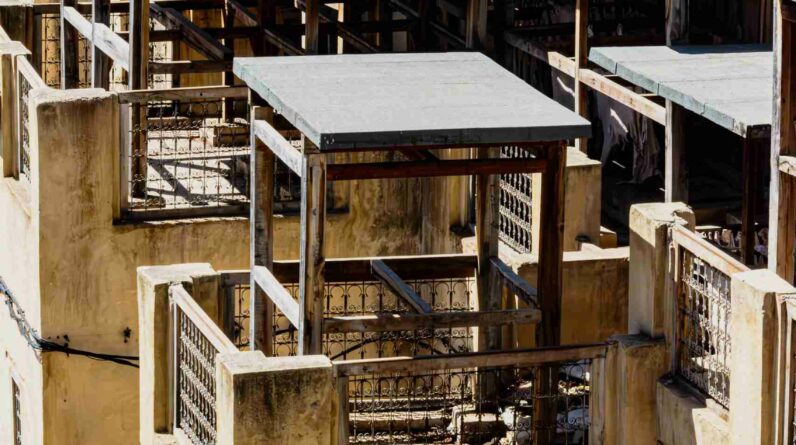Picture this: you’re in the kitchen, preparing a delicious meal. The savory aroma fills the room, tantalizing your taste buds. You’re caught up in the joy of cooking, savoring the culinary journey that lies ahead. But then, disaster strikes – a grease fire ignites and panic sets in. In that moment, knowing exactly what to do can mean the difference between a minor mishap and a full-blown catastrophe.
In this informative article, we will guide you through the crucial steps to take in case of a grease fire. From understanding the causes to implementing preventive measures, we will empower you with the knowledge and confidence to tackle this alarming situation. With our expert advice, you’ll learn to extinguish a grease fire safely and effectively, minimizing potential damage and protecting yourself and your loved ones. So, let’s dive right in and explore the essential dos and don’ts when faced with the fiery challenge of a grease fire.

1. Understanding Grease Fires
1.1 Causes of Grease Fires
Grease fires are most commonly caused by overheating cooking oil or fat. When oil reaches its smoke point, it can ignite and quickly escalate into a dangerous fire. Common causes include leaving a stovetop unattended while frying or deep-frying, splattering oil onto a hot burner or oven, or using excessive oil when cooking.
1.2 How Grease Fires Spread
Grease fires can spread rapidly if not properly contained. The heat from the initial fire causes nearby cooking utensils, curtains, cabinets, or other flammable materials to catch fire. The flames can then spread throughout the kitchen, reaching counter surfaces, appliances, and even walls. It is crucial to take immediate action to prevent the further spread of the fire.
1.3 Dangers of Grease Fires
Grease fires pose significant dangers due to their intense heat and the rapid spread of flames. They can cause severe burns, smoke inhalation, and property damage. Additionally, the smoke released by burning grease contains toxic particles, putting everyone in the vicinity at risk. Understanding the risks associated with grease fires is essential for taking appropriate precautions and mitigating potential harm.
1.4 Identifying a Grease Fire
Identifying a grease fire is crucial for prompt action. Signs of a grease fire include the presence of flames originating from a pan or pot, thick smoke that exhibits a distinct oily odor, and intense heat radiating from the fire. Being able to quickly recognize a grease fire enables you to respond effectively and minimize the potential damage.
2. Immediate Actions
2.1 Turning Off the Heat Source
The first immediate action to take in the event of a grease fire is turning off the heat source. By cutting off the fuel supply to the fire, you can prevent it from intensifying and spreading further.
2.2 Covering the Fire
Covering the fire with a metal lid, baking sheet, or another non-flammable object is an effective way to smother the flames and contain the fire. The lack of oxygen will help extinguish the fire. Do not use glass lids as they may shatter due to the heat.
2.3 Using a Fire Extinguisher
If the fire is too large to control with a lid, it is crucial to have a fire extinguisher readily accessible. Aim the extinguisher at the base of the flames and use short, sweeping motions to extinguish the fire. Ensure that you are using the correct type of fire extinguisher suitable for grease fires.
2.4 Calling Emergency Services
Regardless of the size of the fire, it is essential to call emergency services immediately. Inform them about the grease fire and follow their instructions. They will coordinate firefighters and any additional assistance required to ensure everyone’s safety.
2.5 Alerting Others
While taking immediate actions, it is important to alert others present in the building or household about the grease fire. The earlier people are aware of the situation, the faster they can evacuate or assist in containing the fire. Clear communication and a coordinated response are crucial for successful fire safety.

3. What Not to Do
3.1 Do Not Use Water
Water should never be used to extinguish a grease fire. Pouring water on a grease fire will cause the hot oil to splash and spread the fire further, resulting in a larger and more dangerous blaze. Water and oil do not mix, and using water can lead to catastrophic consequences.
3.2 Do Not Use Flour or Baking Powder
Similarly, using flour or baking powder to extinguish a grease fire is highly discouraged. When these substances come into contact with hot oil, they can ignite and cause a significant increase in the size and intensity of the fire.
3.3 Avoid Removing the Pan
In the midst of a grease fire, it is crucial to avoid attempting to remove the pan from the heat source. Moving the pan can lead to the fire spreading and causing more harm. It is best to focus on turning off the heat and containing the fire rather than attempting to relocate the burning pan.
3.4 Avoid Pouring Salt or Sugar
Pouring salt or sugar on a grease fire is ineffective and can potentially make the situation worse. Salt and sugar do not have the ability to extinguish a grease fire and may cause the fire to escalate and spread further.
4. Safety Precautions
4.1 Keeping a Fire Extinguisher Accessible
One of the most important safety precautions to prevent and handle grease fires is having a fire extinguisher accessible in the kitchen. Ensure that it is suitable for grease fires and regularly check its expiration date to guarantee its effectiveness in case of an emergency.
4.2 Regular Maintenance of Kitchen Equipment
Regularly maintaining kitchen equipment, such as stovetops and ovens, reduces the risk of grease fires. Clean cooking surfaces and remove any grease or food buildup that can easily ignite. Ensuring that all appliances are in good working condition also minimizes the likelihood of an accidental fire.
4.3 Appropriate Cooking Temperatures
Using appropriate cooking temperatures is crucial in preventing grease fires. Avoid overheating cooking oil and always monitor the heat levels while cooking. Use a thermometer to ensure that the oil stays within a safe temperature range.
4.4 Proper Stovetop Supervision
Never leave a stovetop unattended while cooking. Constant supervision allows for early detection of potential issues, such as overheating or splattering oil. In case of any signs of a grease fire, immediate action can be taken to prevent the situation from escalating.
4.5 Cleaning Grease Buildup
Regularly clean grease buildup from stovetops, hoods, and other kitchen surfaces. Grease buildup is highly flammable and can contribute to the rapid spread of a fire. Wiping down surfaces and maintaining cleanliness in the kitchen significantly reduces the risk of a grease fire.

5. Treating Minor Burns
5.1 Cool the Burn
If you or someone else sustains a minor burn during a grease fire incident, the first step is to cool the burn under cool running water for at least 10 minutes. This helps to reduce pain, minimize damage, and prevent the burn from worsening.
5.2 Do Not Apply Ice
Although it may be tempting to apply ice to a burn, it is essential to avoid doing so. Ice can further damage the skin, restrict blood flow, and potentially worsen the burn. Stick to cool running water to effectively cool the burn.
5.3 Cover the Burn
After cooling the burn, cover it with a sterile, non-stick dressing or a clean cloth to protect it from potential infection and further damage. Avoid using adhesive bandages directly on the burn, as they may stick to the wound and cause pain during removal.
5.4 Seek Medical Attention if Necessary
For more severe burns or any burns that cover a large area of the body, it is important to seek medical attention immediately. A healthcare professional can provide appropriate care, assess the extent of the burn, and recommend the necessary treatment to facilitate proper healing.
6. Evacuation Procedures
6.1 Establishing Escape Routes
In the event of a grease fire or any other emergency, it is crucial to establish clear escape routes within the building or household. Identify multiple exits and ensure that they are easily accessible and unobstructed. Plan and practice using these escape routes regularly, especially with family members or other occupants of the building.
6.2 Communication and Accountability
Effective communication is paramount during an evacuation. Establish a designated meeting place outside the building where all occupants gather after safely evacuating. It is essential to account for everyone and ensure that no one is left behind or unaccounted for once outside.
6.3 Meeting Points
Identify safe meeting points away from the building where occupants can gather in case an indoor meeting place is inaccessible. These meeting points provide a secure location for further accountability and coordination.
6.4 Practice Drills
Regularly conduct fire evacuation drills to familiarize all occupants with the escape routes and proper evacuation procedures. Practicing drills increases preparedness and reduces panic in the event of an actual emergency.

7. After a Grease Fire
7.1 Evaluating the Damage
After a grease fire incident, it is important to assess the damage caused by the fire. Ensure that all areas affected by the fire, including the kitchen and surrounding spaces, are examined for any structural damage or residual fire hazards.
7.2 Reporting the Fire
Contact the relevant authorities, such as the local fire department or emergency services, to report the grease fire. Provide accurate and detailed information about the incident to aid in their investigation and documentation.
7.3 Cleaning Up
Thoroughly clean all surfaces affected by the grease fire, paying close attention to removing any remaining grease residue or ash. Use appropriate cleaning materials and consult professionals if necessary to ensure the proper removal of soot and other fire-related remnants.
7.4 Preventing Future Fires
Take steps to prevent future grease fires by implementing safety measures such as regular maintenance of kitchen equipment, proper storage of flammable materials, and adequate stovetop supervision. Learn from the incident and make the necessary changes to minimize the risk of future fires.
8. Learning Fire Safety
8.1 Fire Safety Classes
Consider attending fire safety classes or workshops to enhance your knowledge and understanding of fire safety practices. These classes provide valuable information, hands-on training, and practical skills that can make a significant difference in emergency situations.
8.2 Fire Safety Equipment
Familiarize yourself with different types of fire safety equipment and their proper usage. It is essential to know how to operate fire extinguishers, fire alarms, smoke detectors, and other safety devices. Regularly test and maintain these devices to ensure their functionality.
8.3 Fire Safety Resources
Take advantage of various fire safety resources available, such as online guides, instructional videos, and educational materials provided by fire departments or reliable organizations. These resources offer valuable information and tips to improve fire safety practices at home and in other environments.

9. Insurance and Legal Considerations
9.1 Contacting Your Insurance Provider
If the grease fire has resulted in property damage, contact your insurance provider as soon as possible. Provide them with all the necessary details and documentation to initiate the claims process. Ensure that you understand your insurance policy and any coverage pertaining to fire-related incidents.
9.2 Documenting the Fire
Take photographs or videos of the fire-damaged areas, including personal belongings, appliances, and structural damage. Maintain a record of any expenses incurred due to the fire, such as temporary accommodations or replacement items. Thorough documentation will assist in the insurance claims process and any potential legal proceedings.
9.3 Seeking Legal Advice
In cases where negligence or other factors contributed to the fire, it may be advisable to seek legal advice to understand your rights and possible legal claims. Consultation with a lawyer specializing in property damage or personal injury can provide guidance on the best course of action and potential compensation options.
10. Spreading Awareness
10.1 Sharing Fire Safety Tips
Spread awareness about fire safety by sharing tips and information with friends, family, and colleagues. By educating others about the dangers of grease fires and proactive prevention measures, you contribute to creating a safer environment for everyone.
10.2 Hosting Fire Safety Workshops
Organize fire safety workshops or events within your community to promote fire safety awareness. Invite experts or local fire department representatives to conduct informative sessions, demonstrations, and answer questions from participants. Empowering individuals with knowledge strengthens the collective ability to prevent and respond to fires effectively.
10.3 Supporting Fire Safety Initiatives
Support fire safety initiatives and organizations dedicated to raising awareness and implementing effective fire safety measures. Donate to local fire departments, participate in fundraising events, or volunteer your time to assist in community fire safety campaigns. Together, we can make a difference in preventing and minimizing the impact of grease fires and other fire-related accidents.
In conclusion, understanding the causes, dangers, and appropriate actions during a grease fire is vital for everyone’s safety. By following proper preventive measures, immediate action protocols, and practicing fire safety, we can minimize the risk of grease fires and promote a safer environment in our homes and communities.










